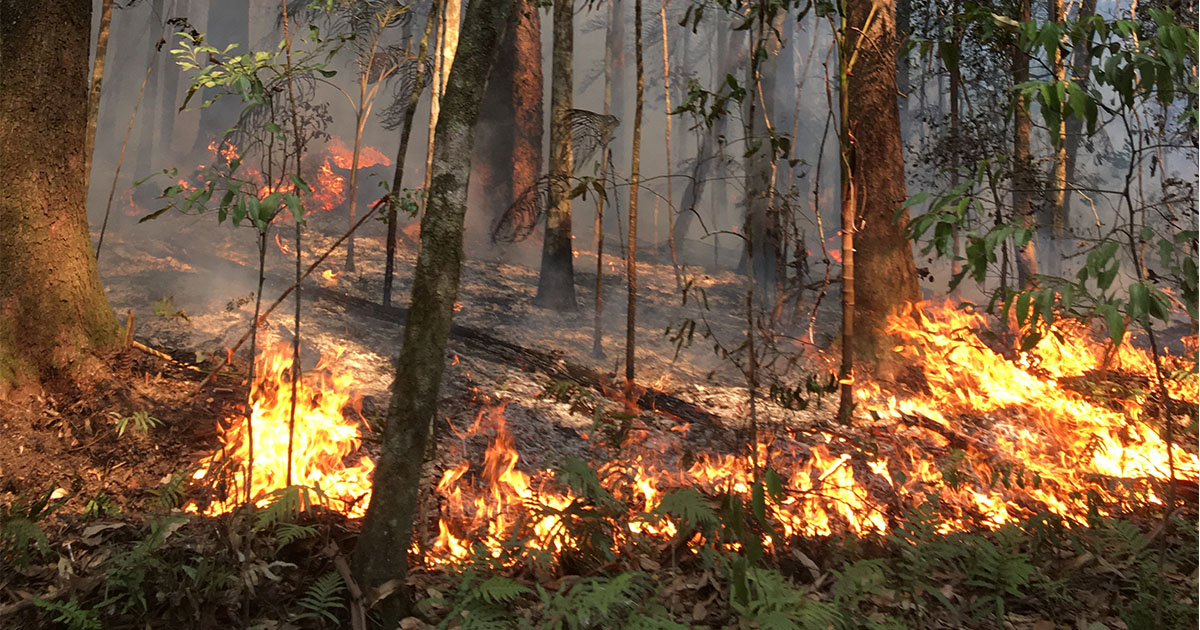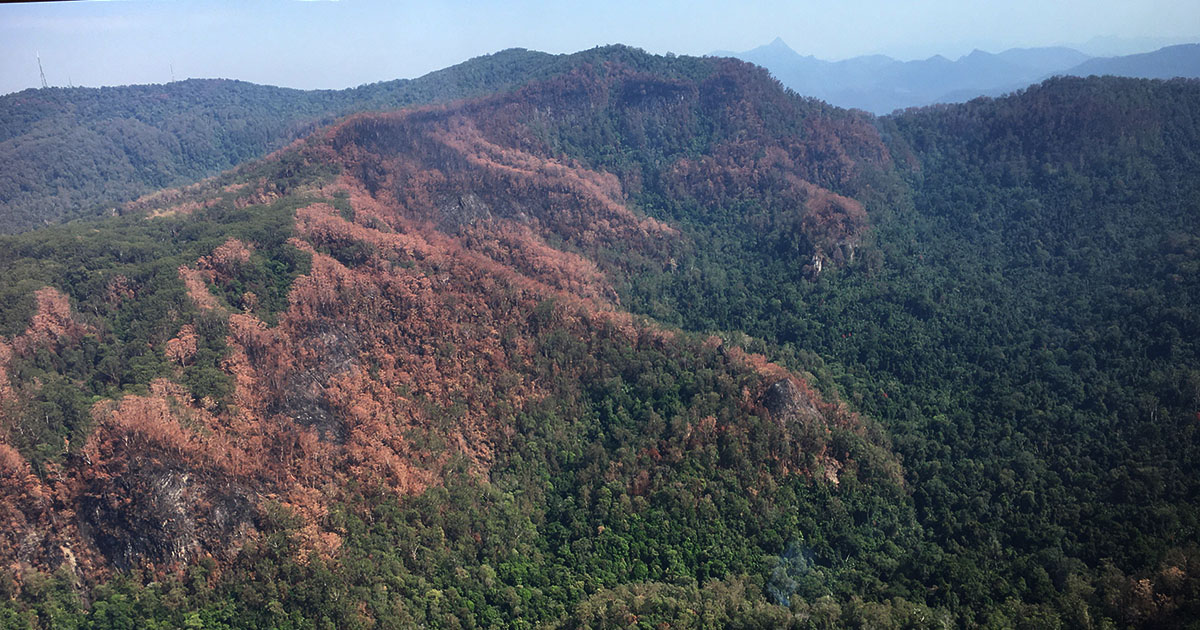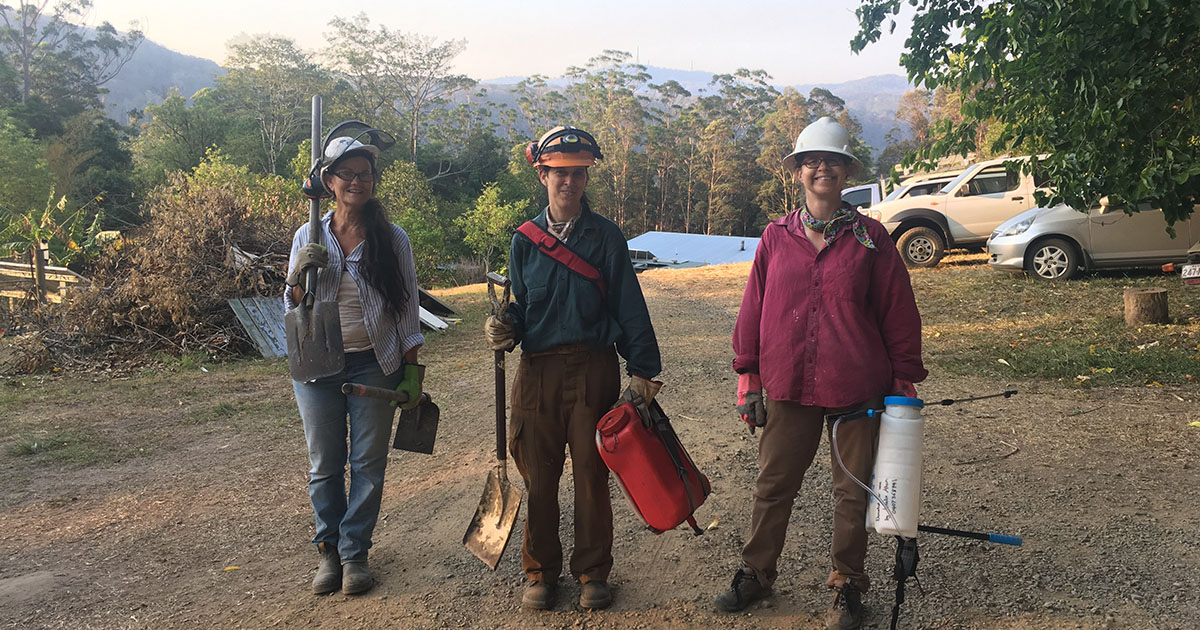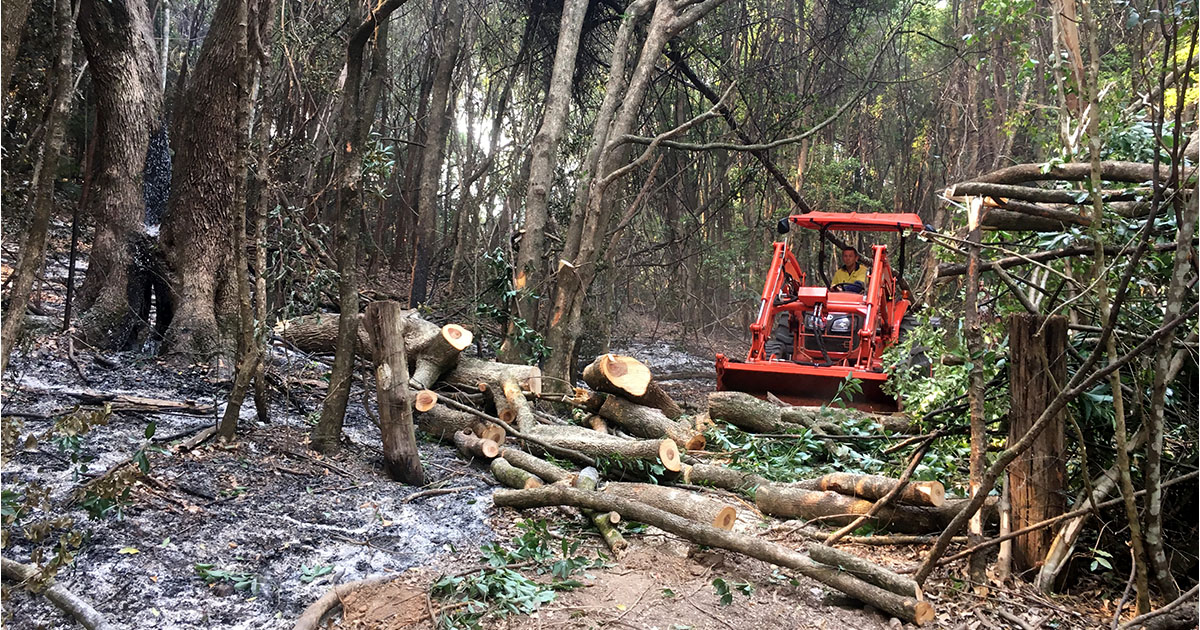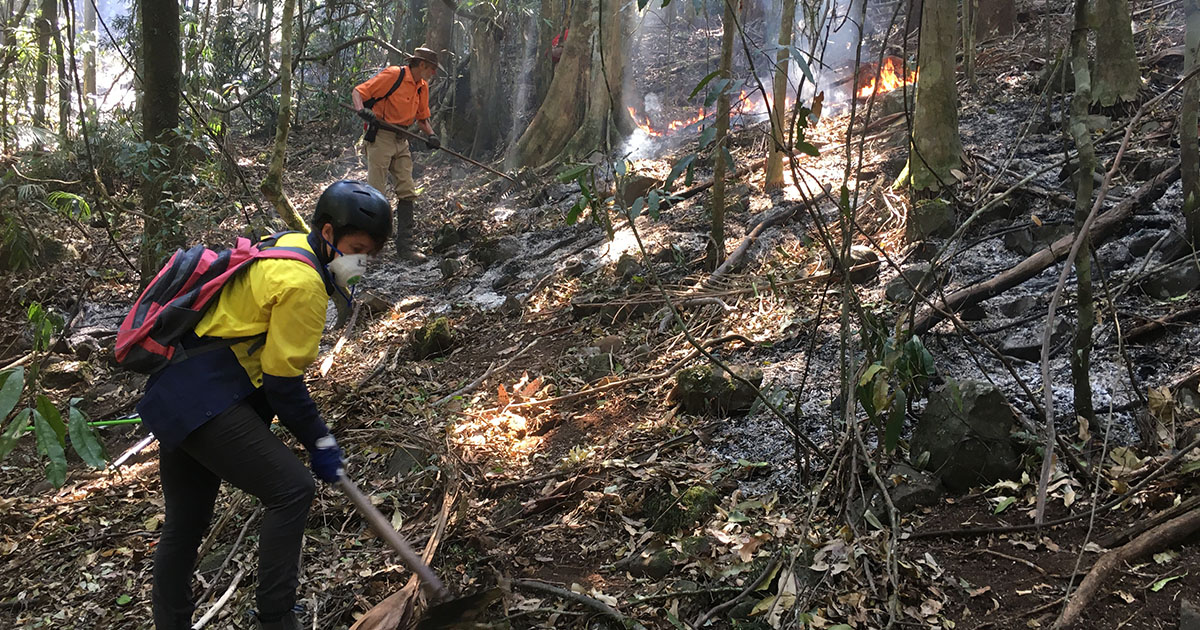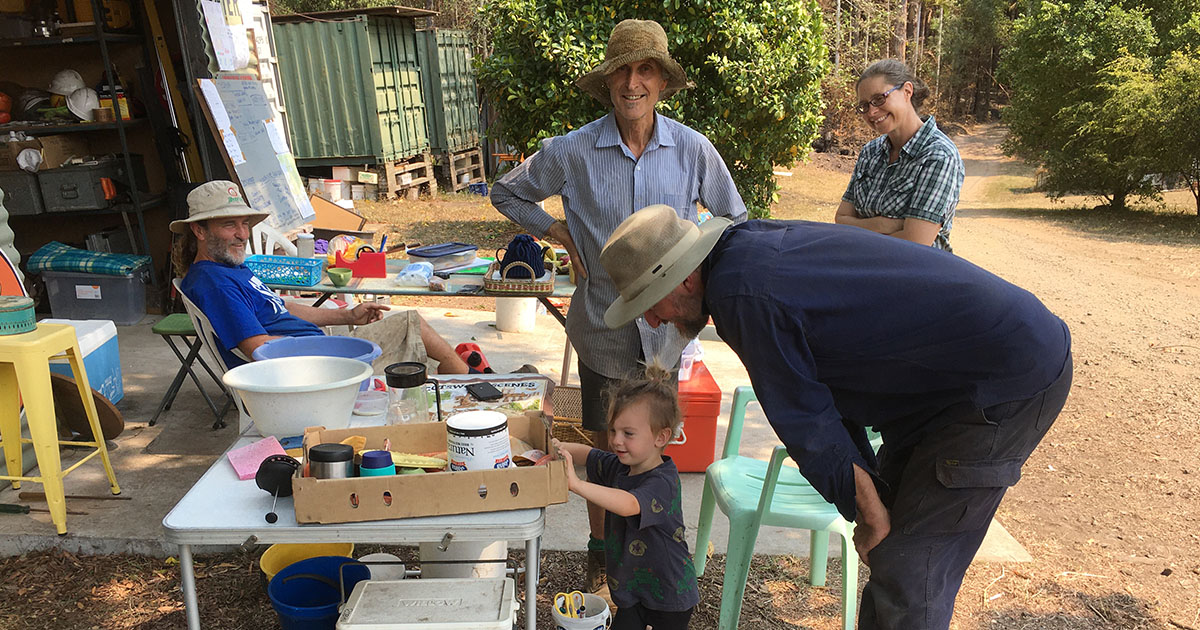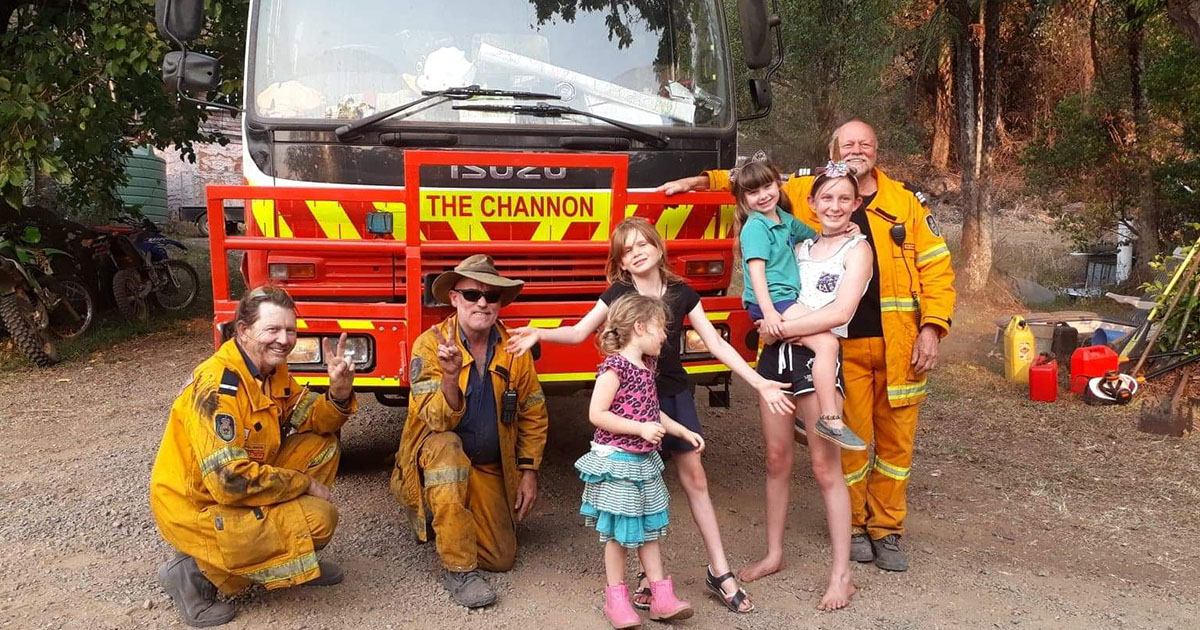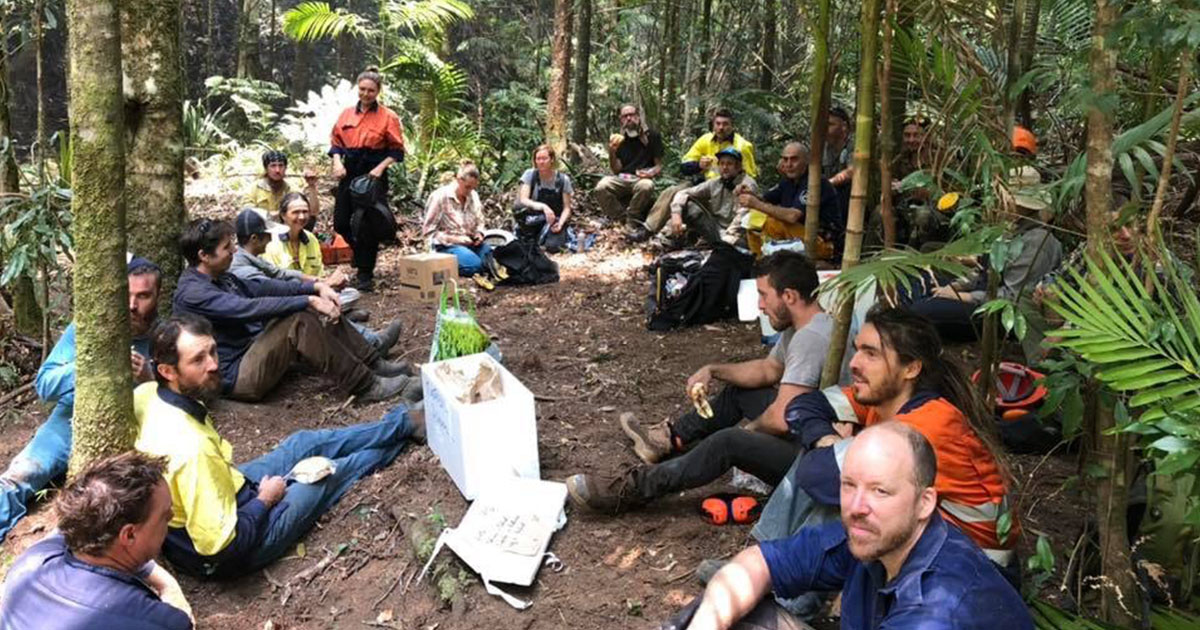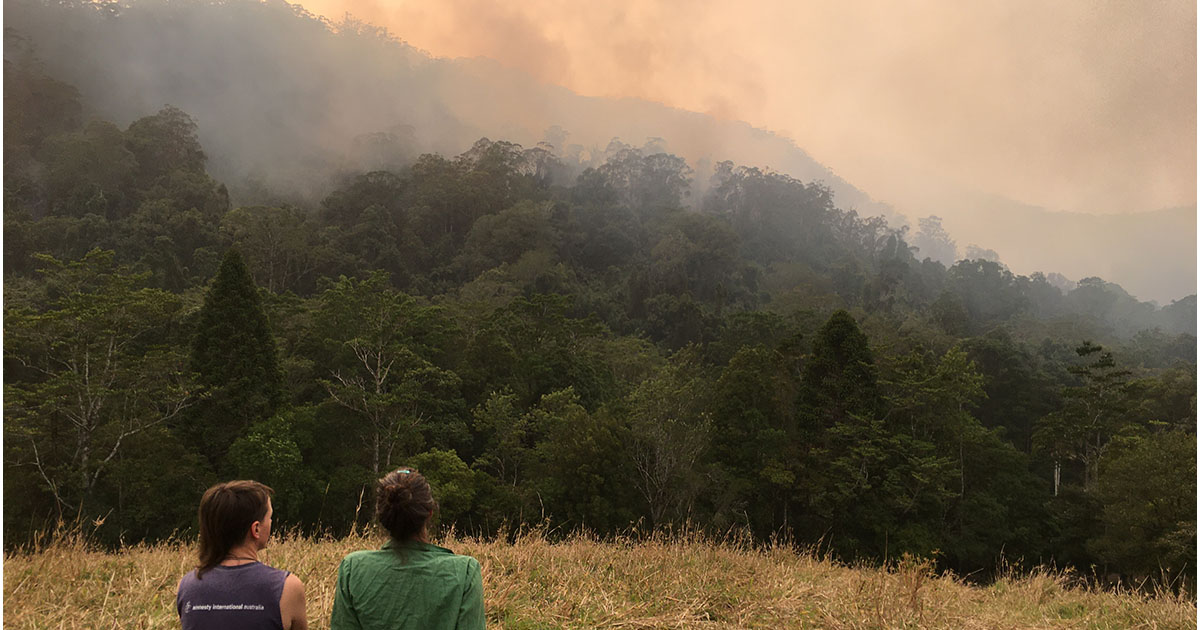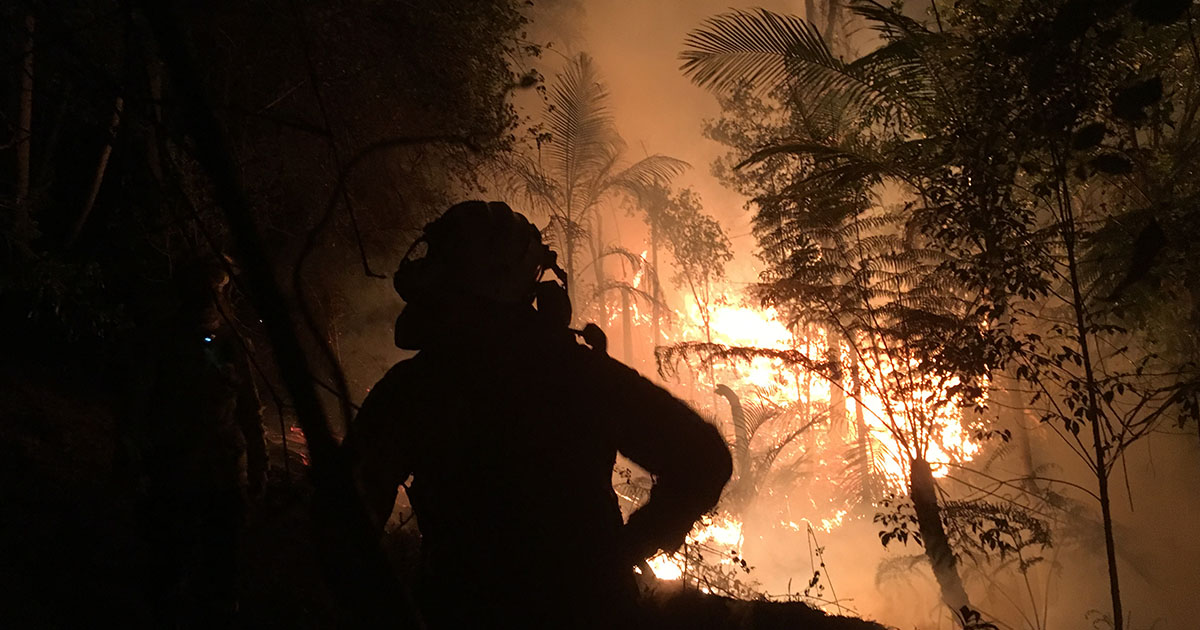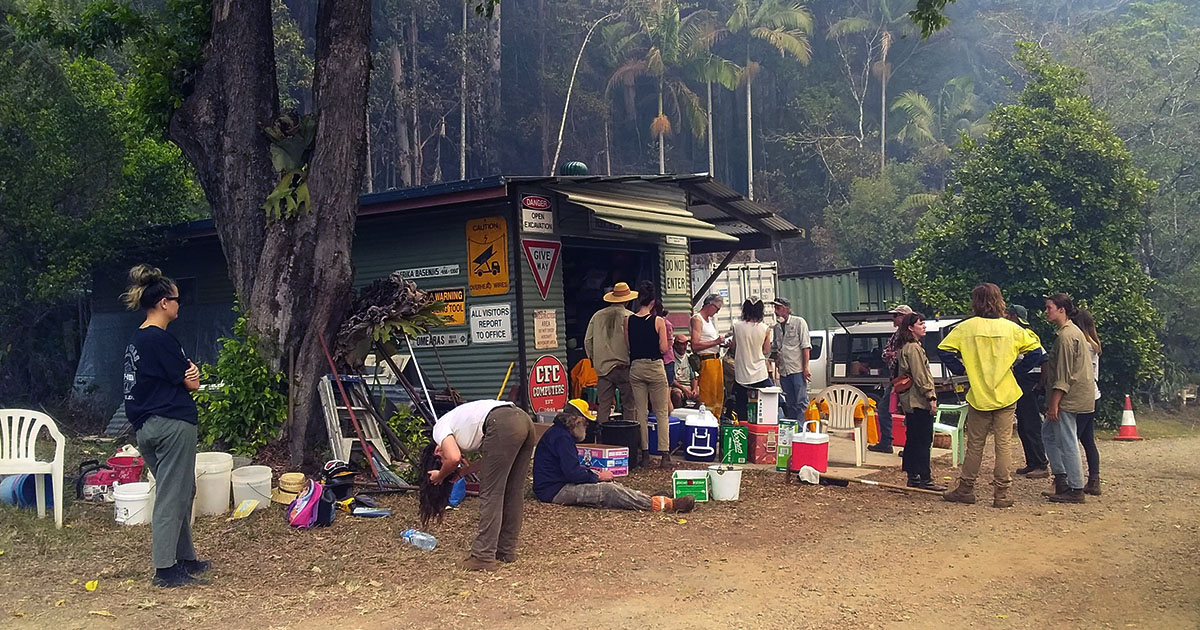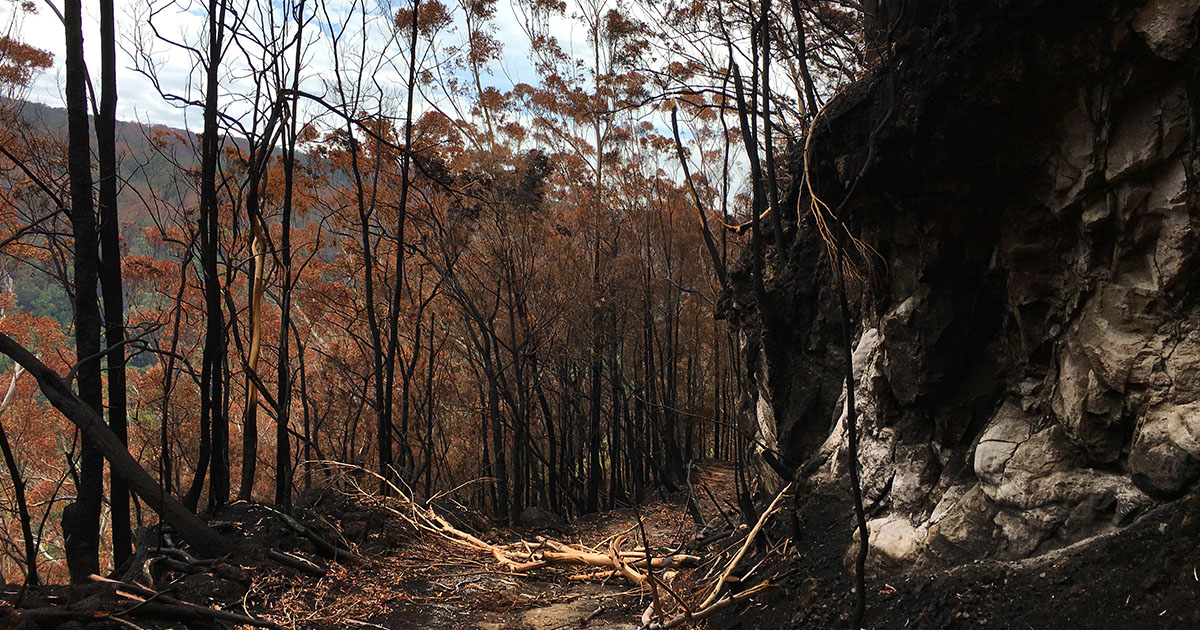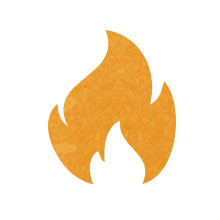 BushFires
BushFires
How is our community affected by bushfires?
Living close to the rainforest in this generally lush green region, means many of us have thought bushfires wouldn’t really happen here. It’s easy to forget that fires have occured in this area, even in farming lands. So the fires of Black Summer 2019-2020 came as quite a shock, and the reality of a changing climate suddenly felt very real. Our community is very much still recovering from the impact of these fires.
After prolonged drought, anywhere is vulnerable to bushfires, even the rainforest as we saw. With the predictions of increasing frequency of extreme weather events, we are motivated to enact a bunch of Actions in our Disaster Resilience Plan with a specific community group dedicated to this The Fire Defense Education Group.
BEFORE – PREPARE FOR BUSHFIRES
Identify if you are in a Bushfire prone location
This map is provided by Lismore City Council. Not surprisingly, the ridges with dryer schlerophyl forest type are more fire prone.
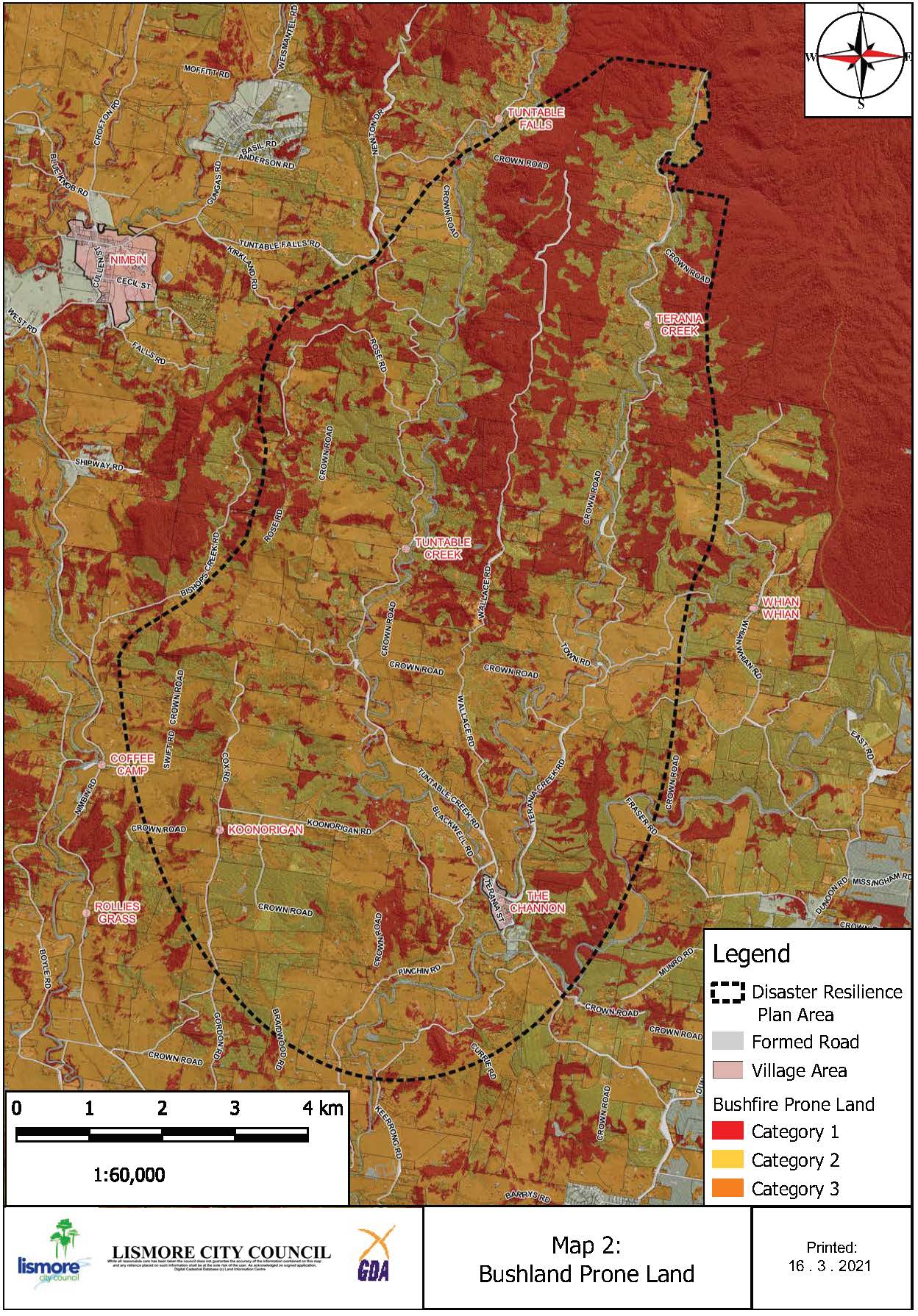
Protect yourself
As per any disaster – Make a plan and get an Emergency Kit
Get ready RFS site http://www.rfs.nsw.gov.au/news-and-media/getready http://www.rfs.nsw.gov.au/plan-and-prepare
Protect your home
- Surround your home or property with an adequate fire break. Create an effective fire break by:
- Mowing your grass regularly
- Keeping it green and well-watered
- Removing excess ground fuel such as vegetation or wood
- Removing excess ladder fuels (materials which, when burning, allow a fire to climb)
- Clearing leaves from gutters, downpipes and building roofs on your property
- Trimming low lying branches that surround your home to at least two metres off the ground.
- Removing unnecessary fuel and combustible material stored on or around your property (store it in a safe location).
- Avoid piling up material against your home, sheds and fences, or near livestock and areas of environmental or cultural significance. (Good for minimising snake habitat too!)
- Check surrounding grassland and bushland for bushfire risk, which increases in areas containing leaves, bark, twigs and cured brown grass. Around 1cm depth of fuel on the ground could carry a mild fire, while around 6cm of fuel presents significant risk.
- Hand and mechanical clearing is often the best method to minimise fuel loads and hazards.
- Reduce combustible material on your property by pruning, thinning or removing trees and shrubs.
Plant fire-retardant tree species
It is well understood that rainforest species are more resistant to going up in flames than other species of high oil content such as Eucalypts. We experienced first hand during the 2019/2020 fires that in many areas the fires stopped burning once they got down the slopes into rainforest gullies.
For a list of aesthetic but fire-retardant species to plant near your home go here.
Plan for your animals/livestock/wildlife
What can you do as an animal owner to be prepared?
Make up an animal Evacuation Kit
Suggestions to consider: feed, water, supplements, supplies (medications, rope/lariat, halters/leads, cleaning supplies, knives, etc.), and papers (veterinary records and proof of ownership). Review your kit regularly to ensure contents, especially feed and medicines, are fresh.
Tag your animals for identification
Make sure animals have some form of identification (microchip, ear/leg tag, leg band, etc.).
Make a Plan ahead of time – What you will do for your animals in an Emergency?
Determine where you will go if you have to leave (Identify friends or relatives who could house livestock during the disaster.
Determine how you will evacuate (Decide how livestock will be transported/housed and prearrange an evacuation site).
In case you are not home: arrange with a neighbour or friends to tend to your livestock (This person should be familiar with your livestock, know your evacuation procedures, know where your evacuation kit is kept, and have your emergency contact information).
Fire – What to expect
Livestock are often injured or killed by fleeing from a bushfire into fences, barriers and other fire risks. Once the flight syndrome kicks in, it is retained long after the smoke, heat and noise stimuli are removed.
Some animal species such as alpacas, llamas and especially horses become virtually unmanageable in the face of oncoming bushfire. In situations like this, experienced handlers (as many as possible), proper equipment, and a firm and prompt evacuation approach is needed. If you choose to leave a halter on your animal, consider attaching identification.
Fire – Where are the safest areas for animals?
Examples of safe areas: A large heavily grazed/ploughed paddock or several with internal gates locked open (to allow livestock to escape/run during through a fire), large, clear stockyards, fire breaks, large dam with earth mounded on minimum 2 fire ward sides (do not allow flammable vegetation to grow on mounds).
Useful Links for animals/livestock information:
Dept of Primary Industries Livestock in Emergencies
Animal Welfare League – Bushfires
Prepare as a Community
Get involved in our community resilience group: Fire Defense Education Group
This group has been focusing on actioning parts of The Channon Disaster Resilience Plan, specifically those relating to bushfires.
Mapping and maintaining firetrails
Help map any trails on your property that could be used in the case of a bushfire.
Join in community efforts to maintain firetrails as open and accessible to RFS vehicles.
Do you have a SWS (Static Water Source)?
The Static Water Supply (SWS) Program is a free service that enables residents to help local firefighters by identifying existing water supplies (such as dams, tanks or swimming pools) on their property that could be used for firefighting purposes.
If you do have a body of water over 3000L and would like to help the RFS and community, you can email community.engagement@rfs.nsw.gov.au, with your name, phone number, address, postcode, local government area.
Once registered, you can put a specially designed SWS sign so that RFS can identify where they can access water.
Join The Channon RFS (Rural Fire Service)
Become a volunteer with the knowledge to respond in a fire emergency.
DURING A BUSHFIRE
Tune into Alerts & Updates
– Download “Fires Near Me” App (Free from App Store on your smart phone)
– Local radio
– Lismore City Council disaster dashboard https://disaster.lismore.nsw.gov.au
– Alerts on this website
– Community communications on The Channon Hookups Facebook Page
Enact your Bushfire Survival Plan & locate your Emergency Kit
See The Channon Disaster Kit pdf
Where are our nearest Fire Evacuation Centres?
Nimbin Showgrounds
Lismore Showgrounds, Alexandra Parade, North Lismore
Southern Cross University Military Road, East Lismore
Community Safe Space if you can’t get to the Evacuation Centres in Lismore?
The Channon Oval (Coronation Park)
Protect yourself from smoke
The community survey identified smoke as the number one issue during the 2019/2020 bushfires. Smoke inhalation can impact upon your health or pre-existing medical
conditions.
You can protect yourself from smoke inhalation by:
o keeping up-to-date with bushfire alerts and RFS and National Parks and Wildlife
information on planned burning activities.
o asking your doctor (if you have a chronic medical condition) about steps you can take
to help you control your symptoms when air quality is poor
o being prepared with enough medication in the house to last you for several days
o seeking medical advice immediately if you are having trouble breathing or experience chest pain
o avoiding physical activity and staying indoors
o keeping indoor air as clean as possible by keeping windows and doors closed and using draught excluders or turning on your air conditioner if you have one onto ‘re-circulate’mode
Care for your animals/livestock – enact your animal plan
Keep cats indoors and dogs under control wherever possible so that wildlife can flee safely through your yard if needed.
Need help to truck/float horses to the Evacuation Location (Lismore Showgrounds)?
Consider Wildlife
Leave out bowls of water for animals and birds escaping fires, use shallow bowls with a few sticks or stones on one side to allow smaller animals to escape if they fall in.
AFTER – RECOVERY FROM BUSHFIRES
Coming soon:
– A community directory of support services directly related to bushfire recovery assistance
– Links to support the mental health and wellbeing of our community
– Recovery – Grants
– Connect with community – People C.A.R.E Group, Fire Defense Education Group
Emergency Contacts
To report a fire emergency
call Triple Zero (000)
If you are deaf or have a
speech or hearing
impairment call 106
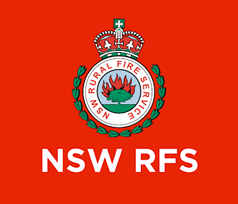
Fires Near me
Always stay in the know with local alerts and live updated bushfire maps

Download the BOM app.
Keeping an eye on the weather is the best way to stay informed this app makes it easy.
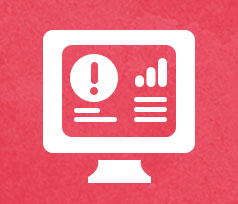
Lismore disaster dashboard
live feed of local weather warnings, road hazards, power outages, and much more!
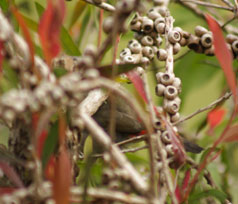
Join the Channon hookups
Facebook group to connect to our community as well as get regular updates on what is going on.
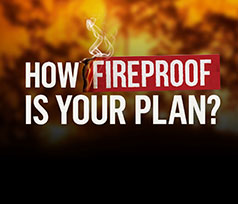
Bushfire Survival Plan
Make sure your survival plan is fireproof
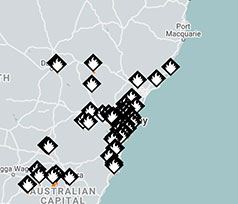
Hazard Reduction Burns
Know where the hazard reduction burns are taking place with RFS live map
Useful Links
Bushfire survival plan
www.myfireplan.com.au
Fires Near me
https://www.rfs.nsw.gov.au/fire-information/fires-near-me
Hazard reduction alerts
https://www.rfs.nsw.gov.au/fire-information/hazard-reductions
Social media channels
NSW RFS Facebook and NSW
RFS Twitter
Bushfire mapping
https://www.lismore.nsw.gov.au
Quick Links






